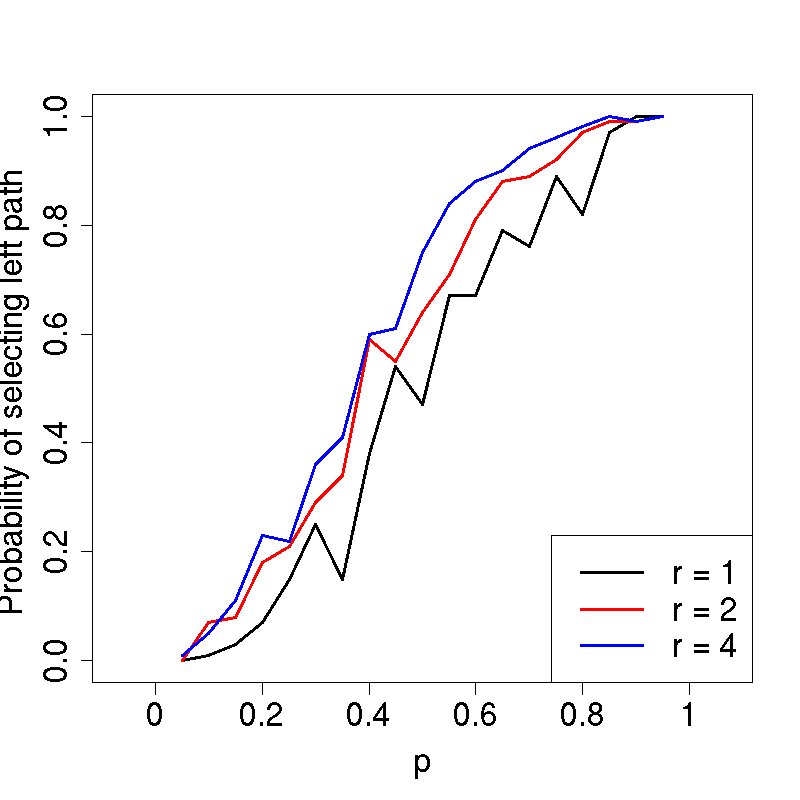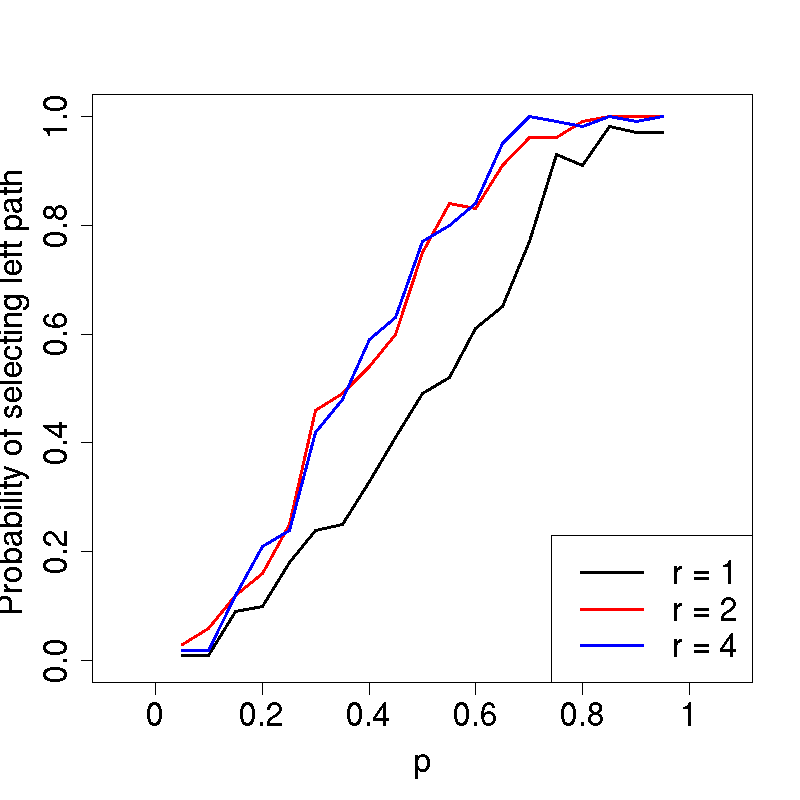| 8 Robots - 2 Teams | |
|---|---|
| Majority Rule | Expert Rule |
 |
 |
by Marco A. Montes de Oca, Eliseo Ferrante, Nithin Mathews, Mauro Birattari, and Marco Dorigo
March 2010
|
This page contains all supplementary information that, for the sake of conciseness, was not included in the paper. Table of Contents
|
In this paper, we study the application of an opinion dynamics model to swarm robotics. Our main result is that when opinions represent action choices, the opinion associated with the action that is the fastest to execute spreads in the population. Moreover, the spread of the best choice happens even when only a minority is initially advocating for it. The key elements involved in this process are consensus building and positive feedback. A foraging task that involves collective transport is used to illustrate the potential of the proposed approach as a decentralized decision-making mechanism for swarms of robots.
Keywords:Social Choice, Agent-based Simulation and Emergent Behavior, Multiagent Learning.
download the video
The following figures show the estimated probability of selecting the left path, that is, the fastest-to-execute action, as a function of the initial opinion bias.
The following figures show number of team formations needed to reach consensus as a function of the initial opinion bias.
The following figures show number of team formations needed to reach consensus as a function of the population size.